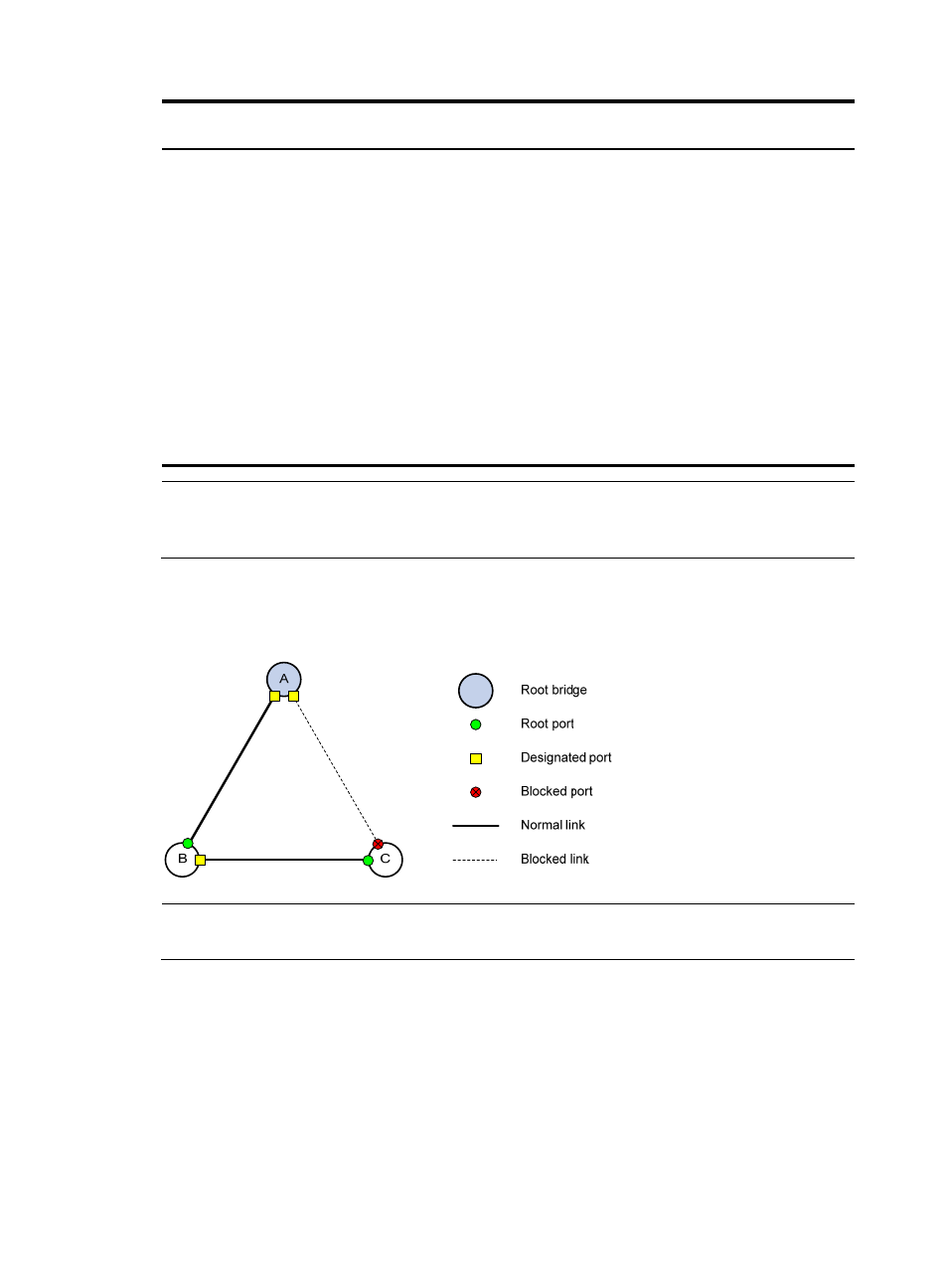The configuration bpdu forwarding mechanism of stp – H3C Technologies H3C WX3000E Series Wireless Switches User Manual
Page 65

55
Device
Comparison process
Configuration BPDU on
ports after comparison
•
Device C finds that the root path cost of Port C1 (10) (root path
cost of the received configuration BPDU (0) plus path cost of Port
C1 (10)) is larger than that of Port C2 (9) (root path cost of the
received configuration BPDU (5) plus path cost of Port C2 (4)),
decides that the configuration BPDU of Port C2 is the optimum,
and selects Port C2 as the root port with the configuration BPDU
unchanged.
•
Based on the configuration BPDU and path cost of the root port,
Device C calculates a designated port configuration BPDU for
Port C1 {0, 9, 2, Port C1} and compares it with the existing
configuration BPDU of Port C1 {0, 0, 0, Port A2}. Device C finds
that the existing configuration BPDU is superior to the calculated
one and blocks Port C1 with the configuration BPDU
unchanged. Then Port C1 does not forward data until a
spanning tree calculation process is triggered by a new event,
for example, the link between Device B and Device C is down.
•
Blocked port (Port C1):
{0, 0, 0, Port A2}
•
Root port (Port C2): {0,
5, 1, Port B2}
NOTE:
In
, each configuration BPDU contains the following fields: root bridge ID, root path cost,
designated bridge ID, and designated port ID.
After the comparison processes described in
, a spanning tree with Device A as the root bridge
is established, and the topology is shown in
.
Figure 15 Topology of the final calculated spanning tree
NOTE:
The spanning tree calculation process in this example is only simplified process.
The configuration BPDU forwarding mechanism of STP
The configuration BPDUs of STP are forwarded following these guidelines:
•
Upon network initiation, every device regards itself as the root bridge, generates configuration
BPDUs with itself as the root, and sends the configuration BPDUs at a regular hello interval.
•
If the root port received a configuration BPDU and the received configuration BPDU is superior to
the configuration BPDU of the port, the device increases the message age carried in the
configuration BPDU following a certain rule and starts a timer to time the configuration BPDU when
sending out this configuration BPDU through the designated port.
- H3C WX5500E Series Access Controllers H3C WX3500E Series Access Controllers H3C WX2500E Series Access Controllers H3C WX6000 Series Access Controllers H3C WX5000 Series Access Controllers H3C LSWM1WCM10 Access Controller Module H3C LSUM3WCMD0 Access Controller Module H3C LSUM1WCME0 Access Controller Module H3C LSWM1WCM20 Access Controller Module H3C LSQM1WCMB0 Access Controller Module H3C LSRM1WCM2A1 Access Controller Module H3C LSBM1WCM2A0 Access Controller Module H3C WA3600 Series Access Points H3C WA2600 Series WLAN Access Points
